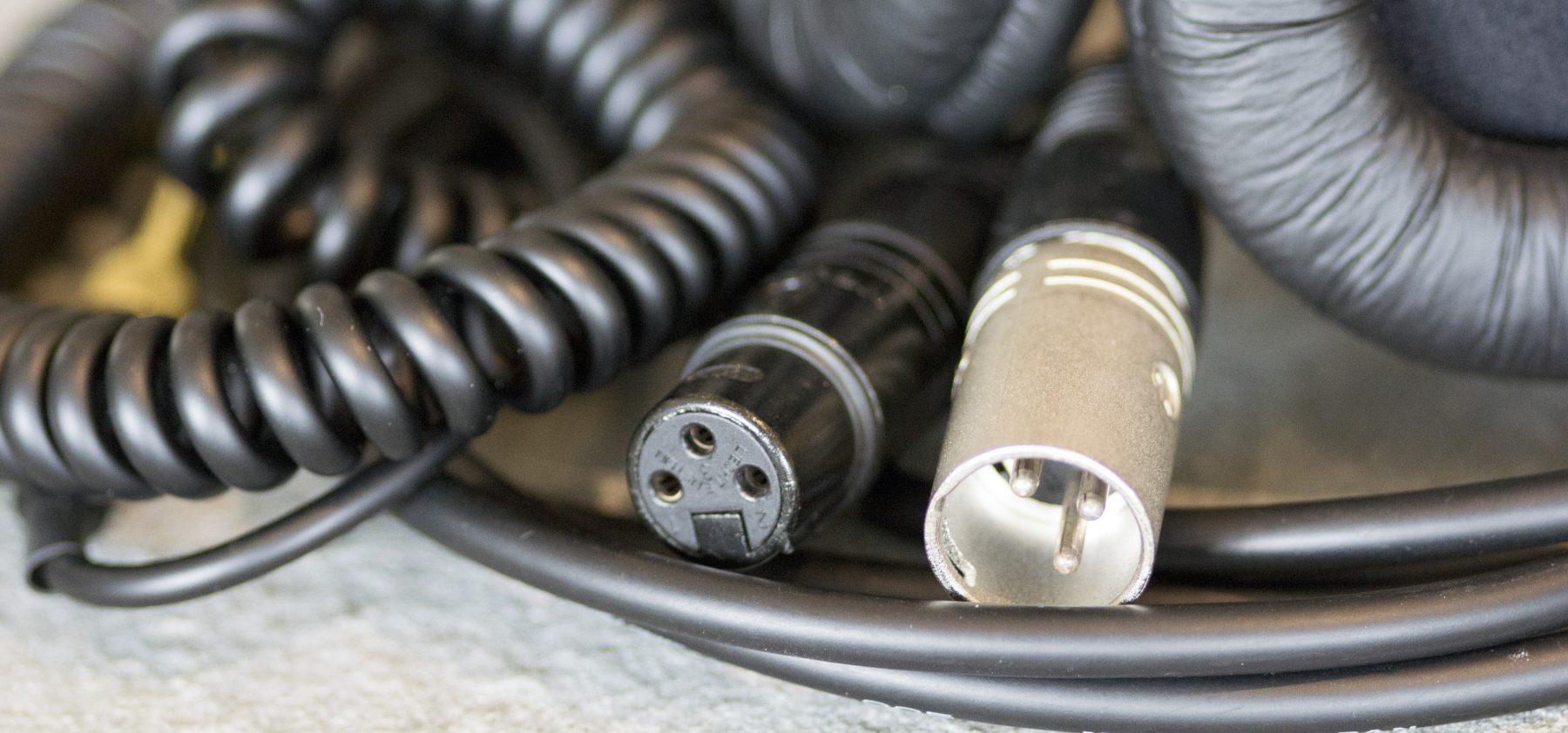Accessories

Windscreens
The microphones used for recording wildlife sounds are vulnerable to wind noise. Air turbulence can overload a microphone’s sensitive diaphragm (a thin membrane that responds to changes in sound pressure), overwhelming or distorting your target sound. Windscreens are designed to prevent wind from hitting a microphone’s diaphragm, but also be transparent to sound waves from birds and other wildlife. When using any type of windscreen it is best to either face the wind head-on or have your back to the wind.
Shotgun microphone windscreens
Foam
 Expanded open-cell urethane foam is the simplest type of windscreen and offers modest protection in very light wind. A foam windscreen is adequate for recording in protected areas, such as the interior of a forest, but is insufficient for recording in grasslands and other windy open habitats. They are often quite inexpensive.
Expanded open-cell urethane foam is the simplest type of windscreen and offers modest protection in very light wind. A foam windscreen is adequate for recording in protected areas, such as the interior of a forest, but is insufficient for recording in grasslands and other windy open habitats. They are often quite inexpensive.
“Softie”
 This type of windscreen is composed of a cylinder of open-cell foam or coarse plastic mesh covered with short synthetic fur cloth. This construction provides a greater level of wind resistance than a simple foam windscreen and is effective in moderate wind. Rycote is one manufacturer that makes an effective windscreen used by many nature recordists.
This type of windscreen is composed of a cylinder of open-cell foam or coarse plastic mesh covered with short synthetic fur cloth. This construction provides a greater level of wind resistance than a simple foam windscreen and is effective in moderate wind. Rycote is one manufacturer that makes an effective windscreen used by many nature recordists.
Zeppelin with long-hair windscreen
 A zeppelin-style windscreen itself is transparent to sound and wind. Installing a synthetic long-hair windcoat over the zeppelin creates a highly effective windscreen, the most effective of the three types covered here. High frequencies are somewhat attenuated by the long-hair windcoat, but some microphones, such as Sennheiser MKH series microphones, offer a compensating high-frequency boost.
A zeppelin-style windscreen itself is transparent to sound and wind. Installing a synthetic long-hair windcoat over the zeppelin creates a highly effective windscreen, the most effective of the three types covered here. High frequencies are somewhat attenuated by the long-hair windcoat, but some microphones, such as Sennheiser MKH series microphones, offer a compensating high-frequency boost.
Parabolic reflector windscreens
A windscreen for a parabolic reflector is typically a flat circular piece of acoustically-transparent material with an elastic or adjustable band. Custom-designed windscreens are available for both Telinga and Wildtronics parabolic reflectors. It is also possible to create your own windscreen from acoustically transparent material such as speaker grill cloth or camouflage fine mesh.
Shockmounts

By design, microphones are sensitive to vibration. Holding a microphone directly in your hand can result in significant amounts of vibration that transmits directly from your hand to the microphone. The end result is low-frequency handling noise that can have a strong negative impact on your recordings. The purpose of a shockmount is to take the microphone out of your hand and reduce or eliminate handling noise. By suspending a microphone in an elastic harness, the microphone is isolated from handheld vibration that would otherwise be directly conducted to the microphone’s body. There are a number of manufactured shockmount options. With a bit of creativity, you can also fabricate an effective shockmount for very little cost using readily available materials such as PVC tube or metal strapping, rubber o-rings, and a wooden or plastic handle. If you are using a shotgun microphone, obtaining a shockmount is highly recommended. Parabolic reflectors typically have their handle or shockmount built in.
Microphone cables
 Two types of cables are generally used to connect a microphone to a recorder: balanced and unbalanced. Balanced cables have a minimum of two conductors and a ground, while unbalanced cables have a single conductor and a ground. Balanced microphone cables are preferred because they offer protection against radio frequency noise (e.g. radio signals, 60 cycle hum from fluorescent lights, etc.). The two conductors of a balanced cable carry any stray radio frequency noise to the recorder’s microphone inputs. Here the two noise signals, out-of-phase with one another meet and are canceled out. The single conductor of an unbalanced cable can pick up noise and carry that noise (along with the microphone signal) into a recorder’s microphone preamplifier, where it is subsequently amplified and becomes part of your recording.
Two types of cables are generally used to connect a microphone to a recorder: balanced and unbalanced. Balanced cables have a minimum of two conductors and a ground, while unbalanced cables have a single conductor and a ground. Balanced microphone cables are preferred because they offer protection against radio frequency noise (e.g. radio signals, 60 cycle hum from fluorescent lights, etc.). The two conductors of a balanced cable carry any stray radio frequency noise to the recorder’s microphone inputs. Here the two noise signals, out-of-phase with one another meet and are canceled out. The single conductor of an unbalanced cable can pick up noise and carry that noise (along with the microphone signal) into a recorder’s microphone preamplifier, where it is subsequently amplified and becomes part of your recording.
The most common type of balanced cable for directional microphones is an XLR cable (pictured). Make sure your microphone and digital recorder both include this type of connector.
Avoid microphones that have a fixed or hard-wired cable. Cables are the components of a recording system that take the most abuse, but they are also the least expensive part of a system. We recommend buying a microphone with a removable cable and always carrying a backup cable with you. That way, if your cable fails, it is easily removed and replaced.

